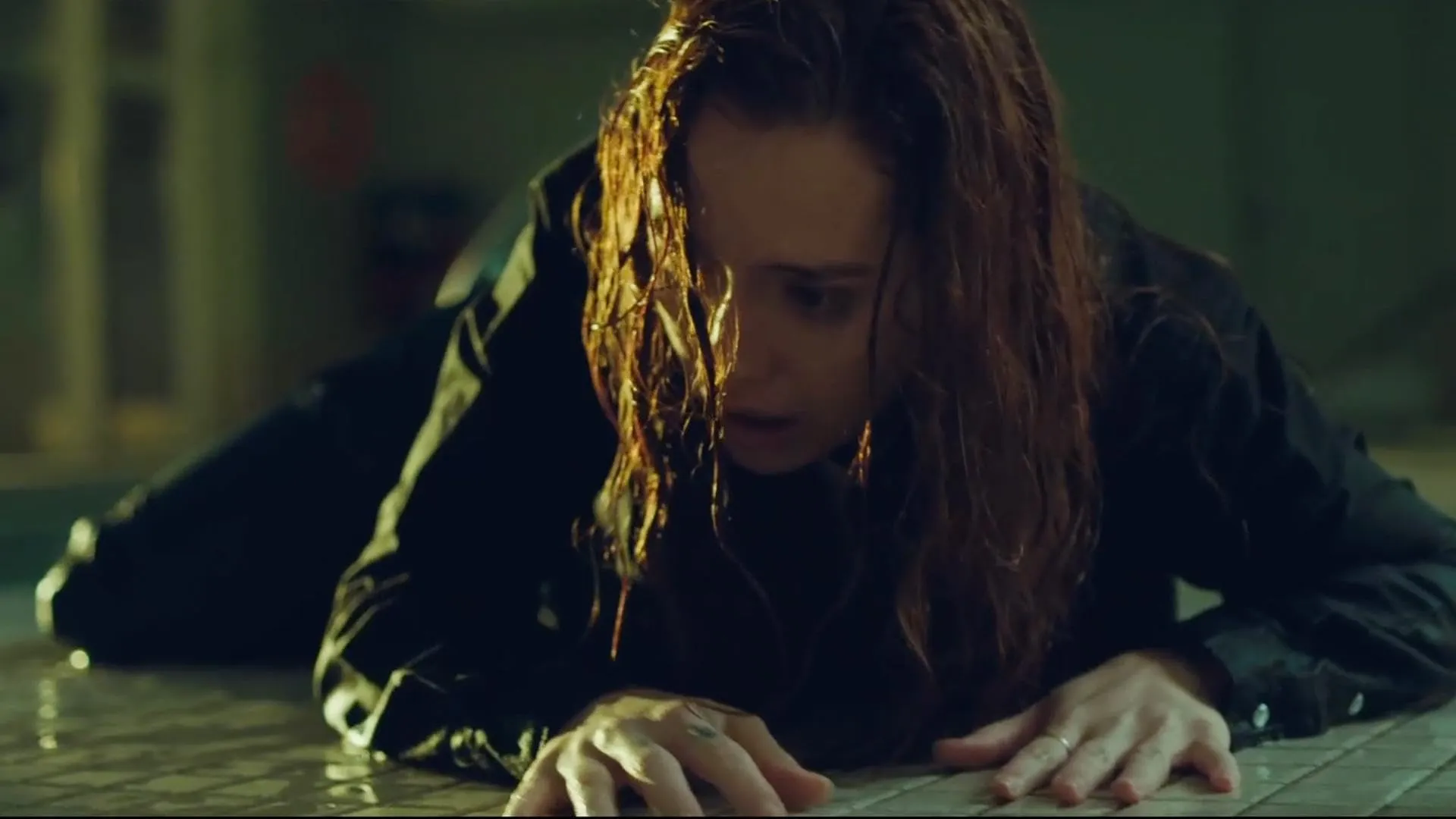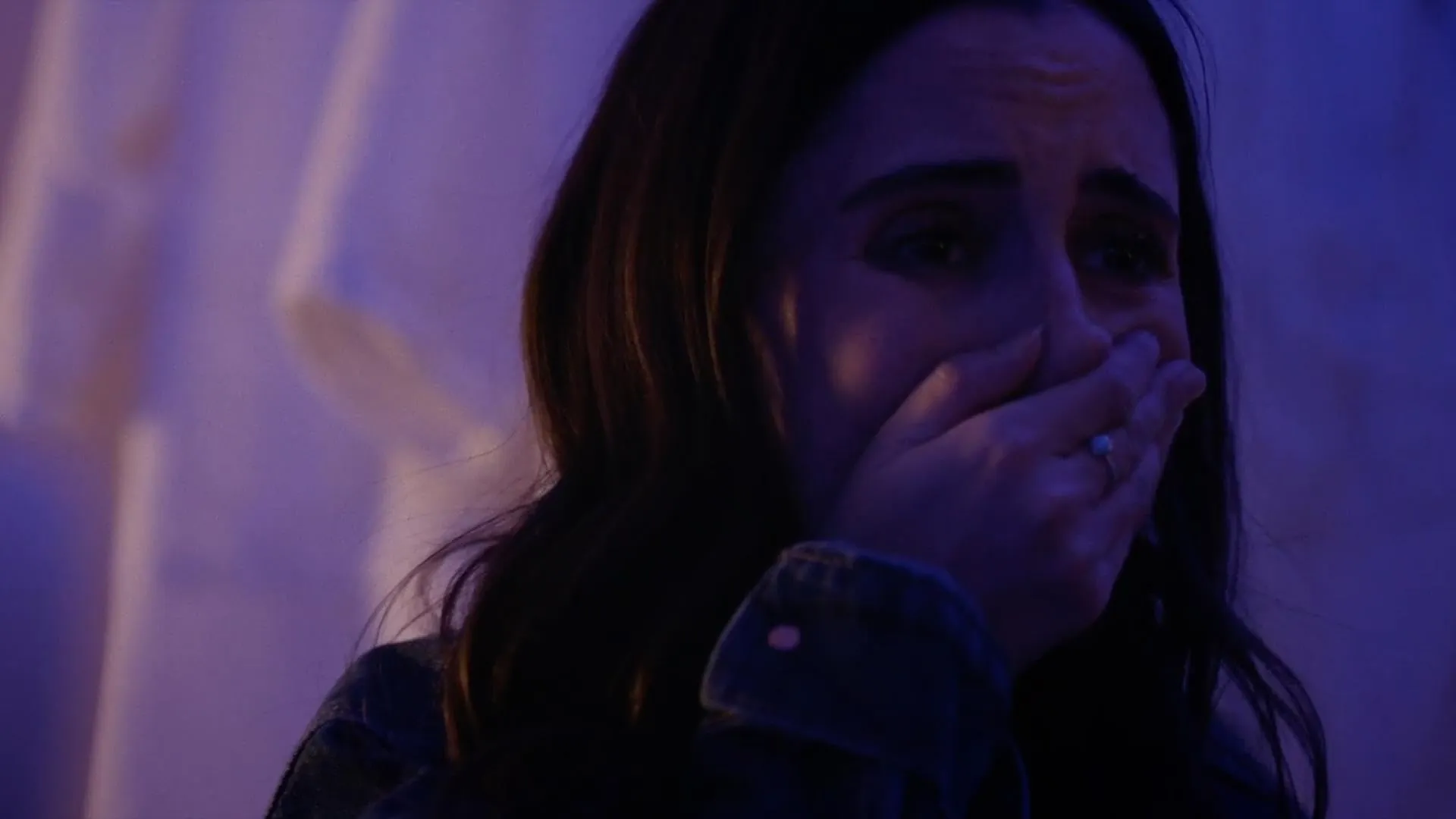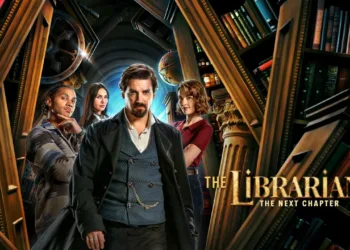In We Kill Them All, we follow Megan and her partner Lane as they visit Megan’s estranged father at a remote mountain resort. The story opens with a straightforward premise that soon transforms into an unforeseen, dangerous encounter when men from the father’s checkered past appear, turning a simple family reunion into a scenario fraught with peril.
Set in a snow-covered resort decorated with the remnants of holiday lights and deserted corridors, the location itself becomes a silent character that reinforces the feeling of isolation and heightens the risk at every turn.
The film is crafted by a director with a clear command of story mechanics, paired with a script that carefully combines intimate family drama with a sudden surge of threats. Beginning with a calm, personal narrative, the film allows the audience to form a connection with the characters before the tension escalates sharply.
This approach gives space for the relationships to be understood and appreciated, even as the circumstances spiral into dangerous territory. Scott Clark examines the way these elements interact to produce a narrative that is both methodical in its construction and unpredictable in its execution.
Narrative Structure and Storytelling
In We Kill Them All, the narrative divides its focus between two distinct threads that ultimately merge into one tension-filled experience. The personal thread follows Megan as she seeks to reestablish contact with her estranged father, Lee—a man whose troubled past has long shaped her world.
Early scenes remind us of family vacations and unresolved issues that have left their mark on Megan’s life, setting an emotional framework that carries through as events take an unexpected turn.
On a parallel track, the story introduces an immediate threat when a group of armed men invades the quiet resort. Their appearance transforms a long-anticipated reunion into a dangerous contest of survival.
The screenplay starts by establishing these separate storylines, which gradually converge to form a narrative that oscillates between personal reminiscence and urgent, life-threatening conflict.
The pacing begins in a measured fashion, allowing time for character backstories and emotional nuances to come forward. As the film proceeds, scenes featuring repeated captures and narrow escapes intensify the pressure.
There are moments designed to shock and capture attention; however, the repetition of certain sequences sometimes lessens the intended impact. This rhythmic build-up of suspense serves as a reminder that even carefully planned narrative turns can feel overly familiar if repeated too often.
A particularly striking twist involves a childhood game that links the past to the present. This moment shifts the film’s focus from familial discord to a stark contest for survival, though not every subplot receives full development.
The dialogue functions as a tool to reveal personal histories and motivations, striving for a balance between necessary exposition and the delivery of tension. Yet, at times, the recurring scenarios slightly dilute the overall force of the narrative.
Character Analysis and Interpersonal Dynamics
Megan stands at the center of the film’s narrative, burdened by a long and complicated past with her father. Her drive to reconnect comes from years of estrangement and the shadow of loss that her mother’s absence casts.
The resort, once a place of cherished childhood memories, now mirrors her inner turmoil. Megan’s actions under threat show a mix of bravery and uncertainty, with moments where she takes charge and instances when her vulnerabilities are on full display. These shifts give us a layered look at her character, revealing a woman shaped by both personal pain and a desperate need to reclaim her past.
Lane, as Megan’s partner, provides a steadying presence amid chaos. Initially seen as the supportive companion, her character evolves as circumstances force her into a more active stance. There are sequences where Lane steps forward, her actions speaking louder than any words could.
Their shared moments offer a window into a bond that goes beyond mere companionship, adding an emotional urgency that deepens the unfolding crisis. The portrayal of their connection brings a subtle yet effective intensity to the narrative.
Lee, the estranged father, emerges as a figure caught between a notorious history and a desire for redemption. His checkered past as a small-time trickster and his efforts to mend broken ties with Megan paint a picture of internal conflict.
His presence is felt as a spark that ignites many of the film’s events, even if he does not dominate every scene. Lee’s brief appearances serve as reminders of a life filled with missteps and missed opportunities.
The criminals, while serving as the immediate threat, are painted with varying shades of menace and clumsiness. Their erratic behavior drives the plot forward, placing Megan and Lane in perilous situations that test their limits. Their portrayal sparks a conversation about power dynamics and the stark reality of survival under pressure.
Visual Style, Production Design, and Cinematography
The resort transforms from a nostalgic family retreat to a barren arena of peril. Snow-covered grounds and stray holiday lights create a stark visual counterpoint to the emerging chaos, framing the location as both enchanting and menacing.
The physical design of the resort—its labyrinth of corridors and secluded spaces—traps the characters in a setting that feels both confining and unpredictable. Specific details, like a discreet duffel bag hidden away, act as anchors that tie the visual narrative to the unfolding events.
Lighting plays a key role in establishing the film’s tone. Dim, cool-toned scenes set a mood that amplifies the sense of danger, while sudden shifts in brightness underscore moments of conflict. The use of a limited color scheme marks transitions between periods of calm and sudden outbreaks of tension, providing a visual shorthand for the story’s evolving pace.
Camera work deserves mention for its contribution to the atmosphere. Tight close-ups during intense exchanges capture the raw emotions of the characters, while wider frames showcase the isolation imposed by the vast, snowy landscape. Overall, the production design supports the film’s thematic aims by merging visual cues with narrative momentum, reinforcing the impact of every twist and turn.
Action Sequences, Pacing, and Suspense
The film’s action scenes mix intense physical confrontations with chase sequences that deliver moments of high energy. The hand-to-hand combat and use of makeshift weapons capture an immediate sense of urgency, although some stunts stray into the implausible, leaving certain injuries and escapes less convincing.
The choreography shows clear intent in planning each altercation, yet the execution can feel formulaic at times, reducing the potential impact.
Tension builds gradually through the narrative, punctuated by bursts of frantic activity. The film introduces peaks of suspense that keep viewers alert, although the repeated cycles of capture and escape occasionally dilute the seriousness of the threats faced.
Some sequences, such as the uncomfortable encounter with barbed wire, are designed to shock and unsettle. However, these set pieces sometimes struggle with visual effects that do not fully capture the grit intended by the script.
Scene transitions from moments of high risk to quieter, more reflective intervals sometimes stretch longer than necessary, testing the audience’s patience. Despite these issues, the action sequences contribute a steady flow to the narrative, ensuring that the physical challenges remain a central driver of the film’s tension.
Soundtrack, Score, and Atmosphere
The film’s score by Gordon Neil Allen, along with its layered sound design, plays a significant role in shaping the overall mood. The mix of sounds originating within the scenes and those introduced in post-production creates a sustained air of alertness.
During high-tension sequences, the sound effects underscore the impact of sudden action, drawing attention to each burst of conflict while sometimes revealing minor inconsistencies in how the violence is portrayed.
In quieter moments, the musical cues provide a subtle backdrop that hints at the characters’ internal struggles, ensuring that emotional nuances are not lost amid the physical drama. Auditory elements and visual cues work in tandem throughout key sequences, reinforcing the film’s pacing and the weight of its more charged moments.
Themes and Underlying Messages
Megan’s attempt to reconnect with her estranged father stands as a central force, using personal interactions, hidden clues, and childhood games to reveal lingering regret and unresolved tensions.
The father-daughter relationship emerges as a subtle mirror for past mistakes and the possibility of forgiveness, even when the past is marred by misdeeds. The narrative suggests that the scars of previous errors might be softened by a willingness to face them head-on.
In the midst of a brutal home invasion, the film shifts its focus to the resilience of its characters. The repeated narrow escapes mirror the persistent drive to survive, highlighting a spirit that refuses to be broken.
Characters confront situations that force them into decisions where moral lines become blurred, suggesting that enduring harsh realities may sometimes require unconventional choices.
The depiction of a same-sex relationship introduces a contemporary touch, offering a quiet reflection on personal identity amid chaos. Violence is portrayed as a force that leaves deep emotional marks, not just physical ones. This approach raises questions about the true cost of survival when past and present collide in a relentless struggle.
The Review
We Kill Them All
The film offers a layered narrative that balances familial tension with relentless conflict. Its character arcs and atmospheric setting provide a solid framework, although some repetitive sequences and uneven action moments reduce its overall punch. The creative team shows clear intent, delivering moments that resonate despite occasional misfires. A respectable effort for those who appreciate story-driven thrillers.
PROS
- Solid performances from the cast
- Effective integration of family drama with thriller elements
CONS
- Certain dramatic moments feel underdeveloped
- Occasional inconsistencies in visual effects
- Some unresolved subplots
- Uneven pacing in key scenes





















































